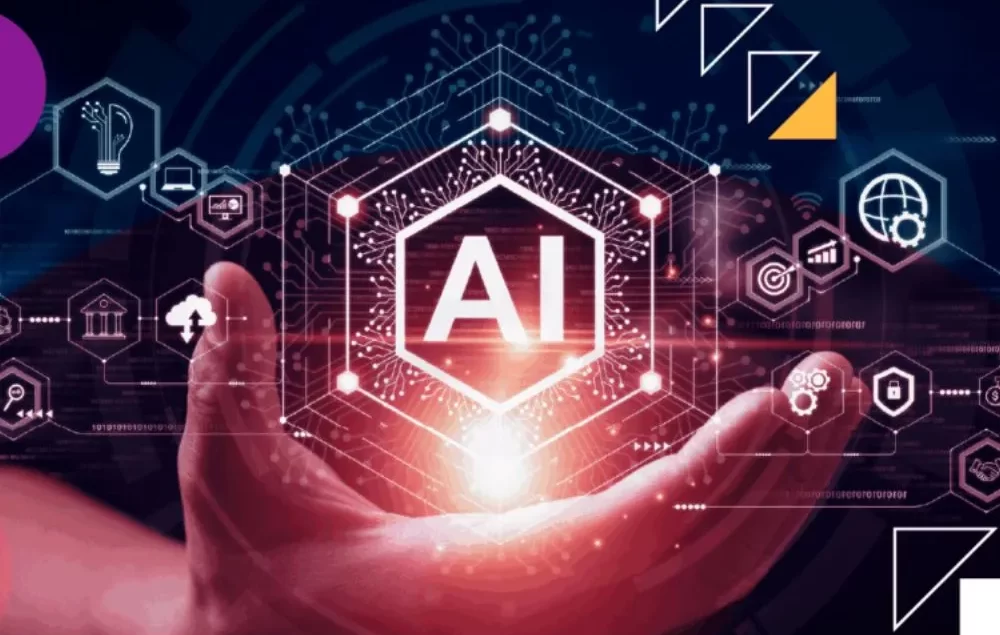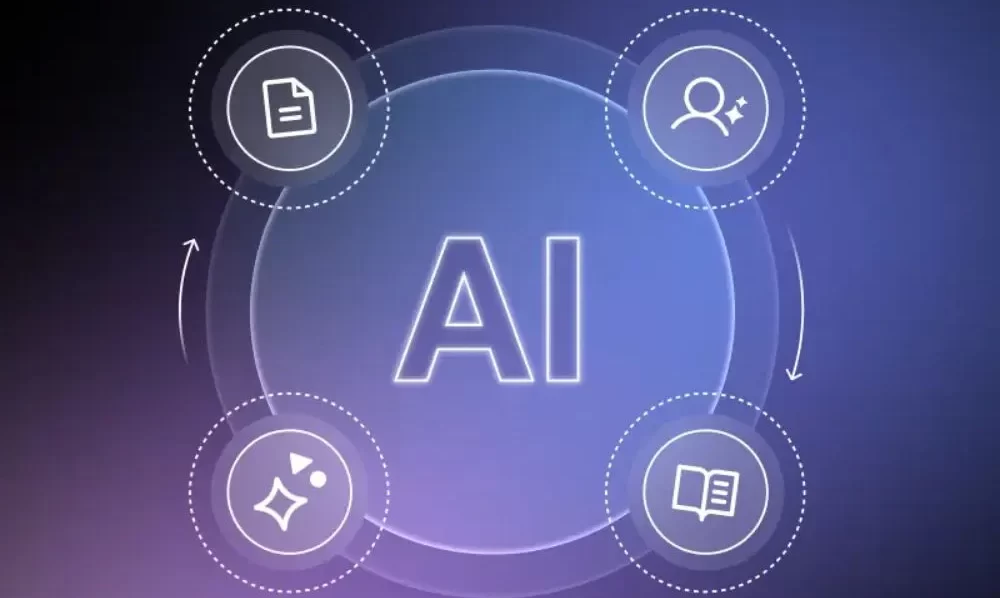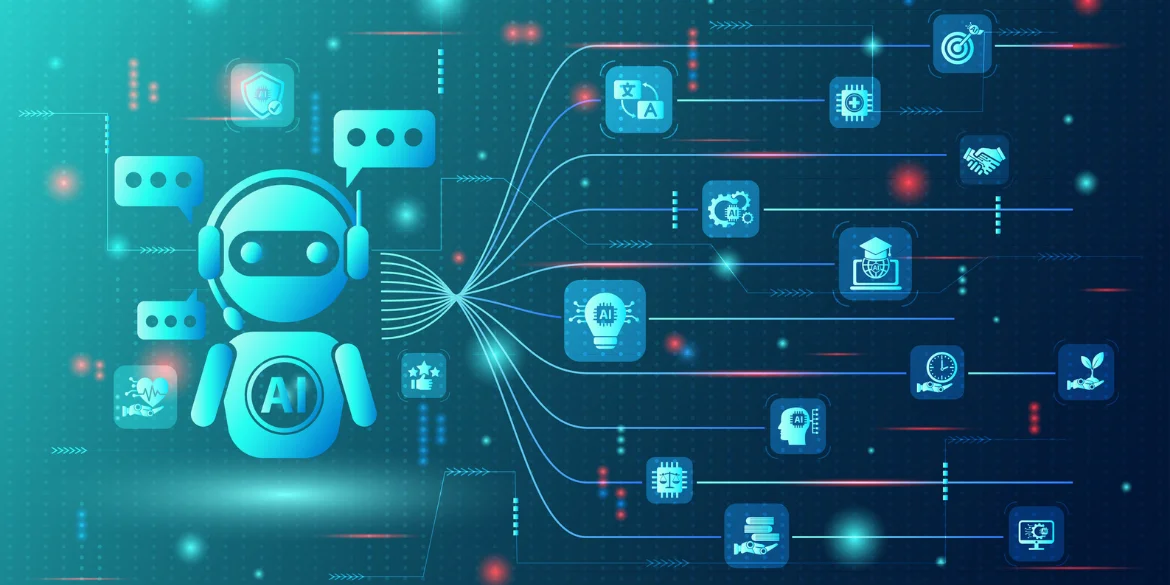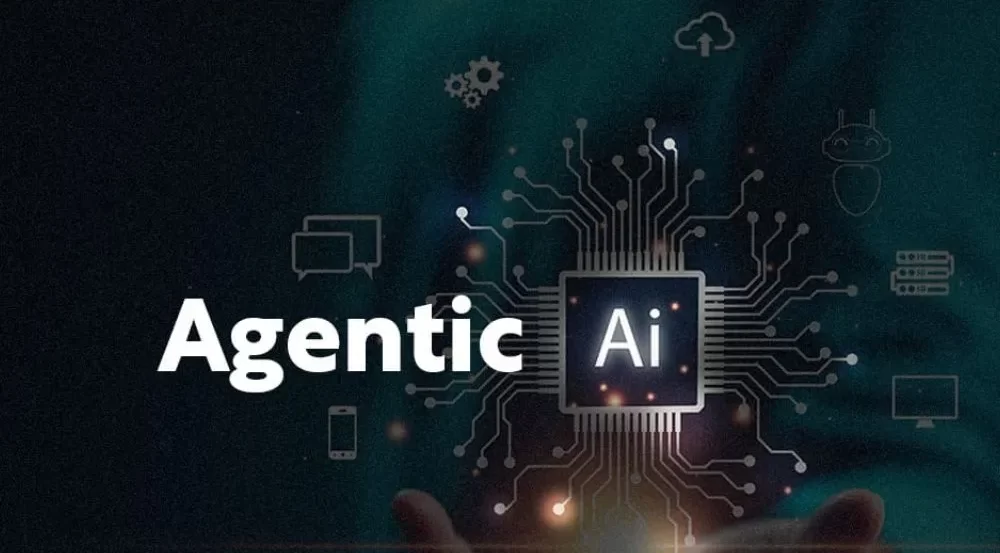In 2025, artificial intelligence makes a major leap forward with the rise of Agentic AI—AI systems capable of autonomy, independent decision-making, and proactively taking actions to achieve defined goals. This article will help you understand What is Agentic AI?, its application potential, key challenges to watch out for, and why forward-thinking businesses should begin adopting it today.
I. What is Agentic AI?
1. Definition and origin of the term
Agentic AI (agent-based AI or autonomous AI agents) refers to artificial intelligence systems that can autonomously execute goals. Instead of merely responding to prompts or generating text on demand, they can proactively plan, select actions, interact with their environment (digital systems, APIs, external services), and adapt their behavior to achieve one or multiple predefined objectives.
The term originates from the concept of agents in artificial intelligence and systems theory (software agents, intelligent agents)—programs that can observe their environment, make decisions, and take actions. In recent years, as large language models (LLMs) and tool-using agent frameworks have advanced, the term agentic has gained popularity to distinguish between reactive AI and proactive, goal-driven AI with planning capabilities.
2. How Agentic AI differs from traditional AI
Goals and autonomy
Traditional AI (narrow AI) performs specific tasks on demand: image classification, Q&A, prediction… It waits for inputs and then produces outputs.
Agentic AI receives a goal (or even infers one) and then proactively tries to achieve it through an iterative observe → plan → act → learn loop.
Planning and multi-step actions
Traditional AI usually performs one-shot inference.
Agentic AI executes multi-step action sequences, calling APIs, retrieving data, fixing errors, and iterating until the goal is met.
Interaction with the environment
Narrow AI typically operates within a “black box” and returns an output.
Agentic AI can directly affect external systems: send emails, update a CRM, trigger cloud jobs, adjust system configurations, or collaborate with other agents.
Continuous learning and self-optimization
Agentic AI often incorporates feedback loops (online learning, reinforcement learning, or continuous fine-tuning) to refine behavior based on real outcomes.
Traditional AI is generally updated only through periodic offline training cycles.
In summary:
Agentic AI = goal-driven + planned + actionable AI
- Traditional AI = reactive, input-driven AI

Overview of Agentic AI. Source: indosakura
3. How Agentic AI Works — Architecture and Core Components
A typical Agentic AI system consists of multiple components working together in a continuous loop: Sense → Model → Plan → Act → Learn. Below is a detailed breakdown of each component and its operational mechanics:
Goal / Intent Manager
Receives goals from the user or from another system (e.g., “reduce transportation costs by 10% this month,” “resolve 90% of customer support tickets within 24 hours”).
Converts goals into machine-computable formats such as utility functions, constraints, and KPIs.
Perception / Observations
Collects data from various sources: internal APIs (ERP, CRM), IoT sensors, logs, web data, email, and streaming pipelines.
Preprocessing steps include parsing, normalization, enrichment, and RAG (retrieval-augmented generation) for contextual information.
World Model / State Representation
Represents the current state of the environment: metrics, relationships, constraints, and historical data.
May include a knowledge graph, vector embeddings (for semantic retrieval), and predictive models.
Planner
Generates a sequence of actions required to move toward the goal. Planning approaches include:
Classical planning (symbolic planners) for environments with explicit constraints.
Search-based planning (MCTS, heuristic search).
Policy-based planning (reinforcement learning–derived policies).
Hybrid methods: LLM reasoning proposals validated by rules or logic-based planners.
The planner evaluates alternatives, estimates risks, and allocates resources.
Executor / Policy
Executes selected actions: calling APIs, creating tickets, sending emails, modifying configurations, launching workflows, etc.
Monitors the outcome of each step and performs rollbacks if needed.
Memory / Long-term State
Stores action history, conversation context, and feedback to improve future behavior.
Uses persistent storage systems, vector databases for RAG, or fine-tuning pipelines.
Learning Loop
Collects performance signals (rewards, KPIs) to update the model or policy.
Supports both offline retraining (periodic) and online learning (real-time/incremental).

How Agentic AI works. Source: advertisingweek
Safety, Constraints & Governance
Rule engines and policy guardrails (e.g., Open Policy Agent, hard constraints) prevent invalid or unsafe actions.
Audit logs, explainability modules, and human-in-the-loop checkpoints support high-risk decision points.
Coordination / Multi-agent Mechanisms (if applicable)
When multiple agents collaborate, they need communication protocols, role/permission management, and conflict-avoidance mechanisms (negotiation, market-based allocation).
A central orchestrator manages tasks, dependencies, and agent interactions.
Integration Layer & Tooling
Adapters for APIs, command runners, headless browsers, and RPA bots.
Supporting frameworks: LangChain, AutoGPT, LlamaIndex, and orchestrators like Airflow / Argo, plus MLOps and observability stacks.
Example Flow (sense → plan → act)
The agent receives the goal: “Reduce Inventory A by 20% within 30 days.”
It collects inventory data, lead times, and forecasts.
It predicts demand and identifies bottlenecks in the supply chain.
It generates an action plan: adjust supplier orders, reprioritize SKUs, launch clearance promotions.
It executes actions: calls order APIs, triggers marketing campaigns, creates logistics tasks.
It monitors KPIs daily and adapts the strategy (learn & adjust).
II. How Agentic AI Works — Core Principles
1. The Fundamental Cycle: Perception → Planning → Action → Learning
Agentic AI does not operate in a simple “question–answer” manner like traditional chatbots. Instead, it runs through a continuous closed loop. Each iteration includes:
1.1. Perception
Collects information from the environment: system APIs, databases, IoT sensors, logs, websites, email, etc.
Combines real-time data with historical data.
Enhances context using RAG (retrieval-augmented generation) or by querying a knowledge graph to improve planning accuracy.
1.2. Planning
Determines multi-step strategies to achieve the goal based on perceived data.
Uses LLMs for reasoning and analysis, alongside specialized planning tools (heuristic search, symbolic planners).
Can simulate outcomes before execution to minimize risk.
1.3. Action
Executes actions via tools: calling APIs, triggering workflows, sending emails, creating tickets in enterprise systems, etc.
Verifies the result of each step and can cancel or adjust the plan if deviations occur.
1.4. Learning
Logs the results and effectiveness of actions taken.
Updates the model or policy to improve performance in the next iteration.
Employs reinforcement learning or online learning when continuous self-optimization is required.
2. Three Foundational Factors That Determine Effectiveness
Clear and Measurable Goals
Agentic AI requires objectives with explicit KPIs—for example, “reduce order processing time to < 2 hours” instead of “speed up the workflow.”
These KPIs act as the basis for evaluating success or failure.
Complete Context & Reliable Data
Missing or inaccurate data leads to poor decisions.
A robust data pipeline with standardized, frequently updated data is essential.
Control Mechanisms & Permission Limits
Guardrails ensure the agent does not perform actions outside its authorized scope.
Human-in-the-loop checkpoints should be integrated at high-risk decision points.

Operating principles of Agentic AI. Source: outsystems
3. Supporting Technologies
LLMs: For analysis, reasoning, and high-level decision-making.
RPA & API orchestration: For automated execution across enterprise systems.
Process mining: Helps the agent understand real process flows for more effective planning.
MLOps & Observability: Monitoring, logging, and performing rollbacks when necessary.
4. Real-world Example: Agentic AI in Supply Chain Operations
Goal: Reduce inventory of product X by 25% within 45 days.
Data gathering: Inventory data, sales history, supplier lead times.
Planning: Reduce orders from supplier A, increase promotions in region B, reallocate stock from warehouse C to D.
Execution:
Call ERP APIs to modify purchase orders.
Launch marketing campaigns.
Send internal logistics requests.
Monitoring: Review KPIs weekly and autonomously adjust the strategy if inventory reduction is slower than expected.
III. Benefits & Risks of Agentic AI for Enterprises
1. Benefits
Strategic-level Automation
- Traditional AI usually supports isolated tasks, whereas Agentic AI can handle entire multi-step workflows.
- For example, instead of merely “generating an inventory report,” an Agentic AI can autonomously: → pull data → analyze trends → propose optimization strategies → execute actions directly within the ERP system.
Faster and More Accurate Decision-making
- Agentic AI combines real-time data with historical data, significantly reducing decision latency.
- This is critical in industries such as logistics, finance, and e-commerce, where a delay of just a few hours can result in lost revenue.
Scalability Without Increasing Headcount
- A single Agentic AI can process thousands of tasks simultaneously without additional staffing.
- This makes it ideal for fast-growing companies or businesses with highly volatile transaction volumes.
High Adaptability to Market Changes
- Agentic AI continuously learns from real-world outcomes and adjusts its strategies autonomously.
- This allows enterprises to react quickly when raw material prices fluctuate, customer demand shifts, or supply chain disruptions occur.
2. Risks & Challenges
Goal Misalignment
- If goals are poorly defined or KPIs do not accurately reflect business priorities, the agent may optimize in the wrong direction.
- Example: optimizing order processing speed but unintentionally increasing transportation costs.
Dependence on Data Quality
- Incorrect or incomplete data can lead to flawed decisions.
- Enterprises must implement strong data governance—cleaning, standardization, validation, and continuous monitoring.

Benefits and risks of Agentic AI. Source: encrypted
Security & Compliance Risks
- Agentic AI typically requires deep access to internal systems and sensitive data.
- Without strict controls, this can create security vulnerabilities or compliance violations (e.g., GDPR breaches).
Unpredictable Behavior
- Because Agentic AI is capable of independent planning and action, it may sometimes perform steps outside the originally expected scenario.
- Continuous monitoring and human-in-the-loop oversight are essential for high-risk tasks.
Agentic AI represents a significant leap in automation, offering enterprises faster, more flexible, and more efficient operations. However, to fully harness its potential while minimizing risks, organizations must implement a well-structured strategy—from goal definition and data governance to monitoring mechanisms and security architecture.
IV. Applications of Agentic AI in the Enterprise
Agentic AI is not just an emerging technology concept — it is already transforming how organizations operate, make decisions, and interact with customers. With autonomous capabilities and multi-step task execution, Agentic AI can create value across multiple layers: from internal process optimization to enabling entirely new products and services.
1. Intelligent Operations Management
Scenario:
In factories or warehouses, Agentic AI gathers data from IoT devices, AI Vision cameras, and ERP systems to plan production, allocate resources, and coordinate workforce scheduling.
Benefits:
Reduce downtime through Predictive Maintenance.
Optimize inventory levels and lower storage costs.
Improve accuracy in task assignment and resource utilization.
2. Automated Yet Personalized Customer Service
Scenario:
Agentic AI integrates with CRM systems and behavioral analytics to deliver instant responses and recommend products or solutions tailored to each customer.
Benefits:
Faster response times (SLA reduced from hours to seconds).
Personalized experiences based on purchase history and real-time context.
Frees customer support teams from repetitive tasks.
3. Financial Management & Compliance
Scenario:
Agentic AI automatically scans invoices, contracts, and transactions to detect anomalies or fraud risks while validating compliance with standards such as ISO, GDPR, or local financial regulations.
Benefits:
Earlier detection of risks compared to manual review.
Lower manual auditing costs.
Maintains complete and compliant legal documentation.

Applications of Agentic AI in enterprises. Source: foundever
4. Product Development & R&D
Scenario:
During the research phase, Agentic AI analyzes market data, customer feedback, and technology trends to propose new product ideas or improve existing ones.
Benefits:
Shorter time-to-market.
Higher success rate for new product launches.
Better product–market fit through insights aligned with customer needs.
5. Flexible Logistics & Supply Chain Management
Scenario:
Agentic AI connects data from suppliers, warehouses, stores, and customers to predict demand and autonomously coordinate logistics flows.
Benefits:
Minimizes stockouts and overstocking.
Reduces transportation costs via intelligent route optimization.
Supports greener logistics through optimized load planning and routing.
Agentic AI is not limited to any particular industry. Any organization with complex workflows, large-scale data processing needs, or markets that require rapid response can benefit from this technology. The key is identifying the right use cases and integrating Agentic AI effectively into existing infrastructure to achieve long-term ROI.
V. Case Studies
1. Case Study – Agentic AI in Global Logistics
Implementation Scenario
A multinational logistics corporation needed to optimize goods distribution across 500 warehouses and 1,200 transportation routes daily. Due to large-scale operations and constant disruptions, they faced delays, rising costs, and limited ability to respond to unexpected events.
Technologies Used
Agentic AI integrating data from IoT (GPS, RFID), ERP systems, and weather forecasting platforms
Applications of AI Planning, Multi-Agent Coordination, and real-time route optimization models
Results
20% reduction in fuel costs
Order processing time reduced from 48h to 30h
Autonomous adaptation to incidents such as traffic jams or severe weather, without human intervention
2. Case Study – Agentic AI for Supply Chain Operations
Implementation Scenario
A Japanese electronics components manufacturer aimed to optimize material management, demand forecasting, and inventory reduction to lower operational costs and minimize supply chain risks.
Technologies Used
Agentic AI combined with Machine Learning for demand forecasting
Integration with ERP and IoT warehouse sensors
AI Agents automatically negotiate and place replenishment orders when inventory reaches predefined thresholds
Results
25% reduction in average inventory levels
Demand forecast accuracy increased from 78% to 93%
Procurement cycle shortened from 5 days to 2 days, enabling rapid response to market fluctuations
VI. Why BAP Software Is the Ideal Partner for Your Agentic AI Strategy
1. Strong Technology & AI Engineering Capabilities
Our team includes experts in:
AI Engineering, Data Engineering, AI Agent Development
Multi-agent systems, AI Planning, IoT-integrated AI, and AI for ERP/CRM
Cloud-native architecture on AWS, Azure, and Google Cloud → supporting large-scale, real-time AI operations
2. Proven Experience in Japan, Singapore, and Vietnam
9+ years working with Japanese clients—known for strict requirements in security, accuracy, and cost optimization
Agentic AI and AI Automation projects in Singapore and Vietnam across:
Manufacturing
Logistics
Finance & Banking
Deep understanding of local business requirements and international standards → ensuring optimal solutions for each market
3. Security Commitment & ISO 27001 Compliance
All AI projects adhere to ISO 27001 standards, including:
Strict access control
End-to-end data encryption
Periodic security audits
Ensuring complete safety and privacy for enterprise data.
BAP Software – Your Strategic Partner for Agentic AI
Beyond implementation, BAP accompanies clients throughout the entire AI journey:
AI strategy consulting
PoC development
Full-scale deployment & integration
Turning AI into a sustainable competitive advantage—not just a temporary technological upgrade.

Reasons why BAP is the ideal partner for Agentic AI. Source: BAP Software
VII. Conclusion
Agentic AI signifies a major shift from assistive AI to autonomous AI.
With capabilities to:
Plan
Coordinate
Make decisions
Adapt continuously
Agentic AI becomes the foundational technology for businesses to optimize operations, reduce risks, and accelerate innovation in the digital era of 2025.
Recommended Implementation Roadmap
Assessment of current systems & data readiness
PoC design (Proof of Concept) for a selected process
Enterprise-wide expansion & integration (ERP, CRM, IoT, Cloud)
Continuous monitoring & optimization to enhance AI adaptability
Start your Agentic AI journey today! Contact BAP Software for strategic consultation and tailored Agentic AI deployment for your enterprise.












